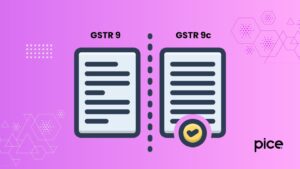TCS Invoice Format Under GST
- 3 Jul 25
- 11 mins
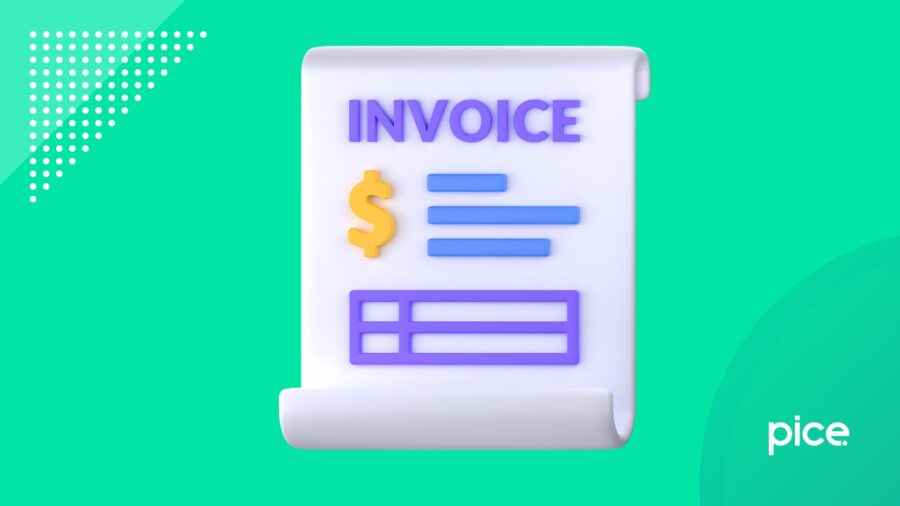
TCS Invoice Format Under GST
- What is Tax Collected at Source in GST?
- How to Download TCS Invoice Under GST in Excel Format?
- Purpose Of TCS Under GST
- Format Of TCS Invoice Under GST
- TCS Invoice Format Under Income Tax vs TCS Invoice Format Under GST | Key Differences
- What is The Threshold Limit For TCS Invoice Format Under GST?
- Eligibility of an E-Commerce Operator for TCS Provision of GST
- Conclusion
Key Takeaways
- TCS under GST is mandatory for e-commerce operators collecting payments on behalf of sellers, ensuring tax traceability and compliance.
- E-commerce platforms must register under GST and file GSTR-8 monthly returns, detailing TCS collected from each transaction.
- A GST-compliant TCS invoice must clearly mention seller-buyer details, item descriptions, GST and SAC codes, and collected TCS.
- TCS collected can be claimed as input credit by suppliers against their GST liabilities, streamlining their tax process.
- Unlike income tax TCS, GST TCS applies broadly across e-commerce sales and must be calculated on the net taxable value (excluding GST).
Under the Goods and Services Tax (GST) regime, Tax Collected at Source (TCS) refers to the tax collected by e-commerce operators from payments received on behalf of sellers using their platform. This provision ensures better tax compliance and tracking of transactions in the digital marketplace.
As per Section 206C (1H) of the Income Tax Act, e-commerce operators with an annual turnover exceeding ₹10 crore are mandated to collect TCS if their receipts from a single buyer cross ₹50 lakh in a financial year. The TCS amount must be collected at the time of receiving payment from the customer.
Keep reading this guide to know everything about GST invoice template for TCS in detail.
What is Tax Collected at Source in GST?
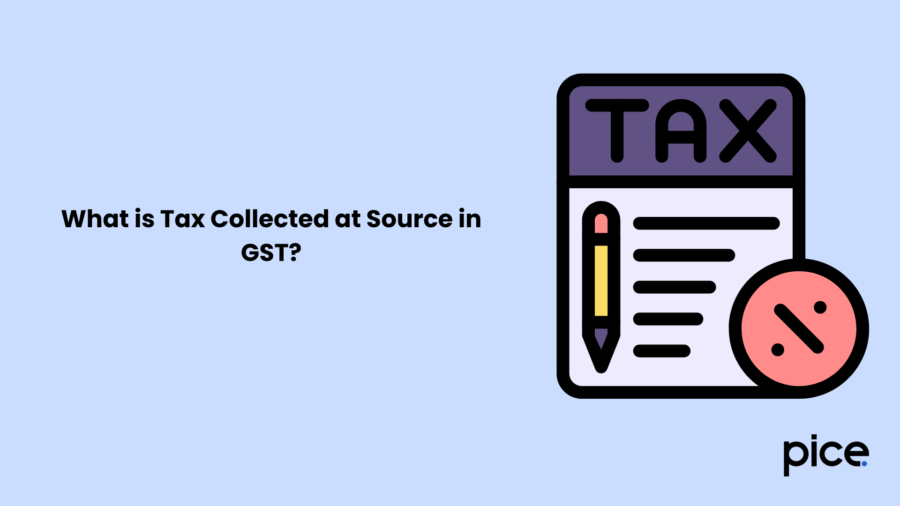
In simple terms, TCS is a provision under the GST system where an e-commerce operator collects TCS from the buyer at the time of sale and then pays it to the government. The government has provided specific tax rates for these operators to collect from the buyer.
Operators are responsible for creating the receipt with a separate section for TCS payment. They must pay the collected taxes to the government within a specified time frame. Respective buyers who have paid the TCS can claim a credit for the TCS amount paid when filing their GST returns.
How to Download TCS Invoice Under GST in Excel Format?
Here are the simple steps to download the TCS e-invoice under GST in Excel format:
- Visit the e-invoice portal- https://einvoice.gst.gov.in
- Log in with your GST credentials through the GST portal.
- Once you log in, you will find the e-Invoice JSON download icon. Click on it.
- You can also access this facility through G2B APIs that you can access through the GSP/ASP route.
- You will have to authenticate your credentials during the API access as well.
Purpose Of TCS Under GST
As of 1st October 2020, e-commerce company or eligible online sellers collect the buyer's GST while making the invoice and then pay it to the government. This organises the structure of tax payments. Here is a list of purposes that the TCS system in GST serves.
- Tax collection at the source makes it hard for unfair sellers to hide their tax obligations and evade their taxes.
- E-commerce is now available for transactions of the cheapest to the most expensive items. The government can use their organised transactional structure to ensure compliance and find potential tax evaders.
- Collecting taxes via e-commerce operators allows buyers to pay their taxes instantly when they pay their product price.
- Ensure compliance and reduce tax evasion.
- The TCS way of tax collection minimises the burden of separately accounting for the tax obligations of buyers and sellers and streamlines the tax collection process.
- The government can potentially increase its revenue with better GST compliance and reduced tax theft. This prompts development in the country.
Format Of TCS Invoice Under GST
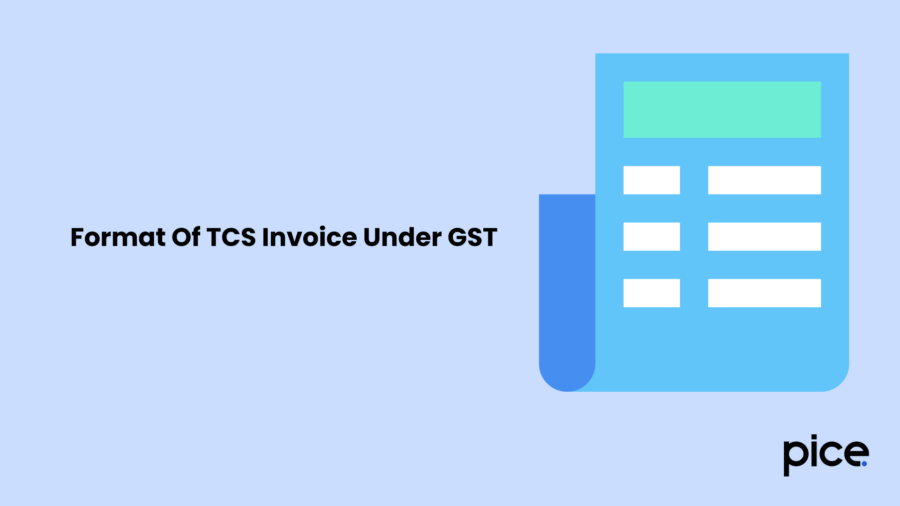
A TCS invoice made with GST regulations consists of a set of columns and rows with various headers requiring information to be filled out while developing a professional invoice. Here are some key details that need to be filled out while making an invoice.
Top Information
This section requires basic seller and customer details that make every invoice unique:
- Invoice No: It is a unique invoice number used for identification.
- Date: This is when the buyer makes the purchase, and the invoice is created.
- Salesman ID: This section contains the seller's information, from the seller's name to contact details and GSTIN number.
- Po No: It is the place of supply where the goods or services are supplied.
Details of the Sale Items
This section contains all the details regarding the sale items. Here is a list of them:
- Item Name / Description: This part consists of the description of the item that is being sold.
- SAC: The SAC or Services Accounting Code is used to identify and determine the GST applicability of services in India.
- Quantity: it refers to the amount of goods or services that are sold.
- Price Per Unit: It is the unit price of an item.
- GST: GST is the rate of GST required for every specific item.
- Amount: It is the amount of tax collected at the source.
End Total
Various concluding total amounts are available in this section. Here is a list of those details:
- Sub Total: This refers to the actual value of goods and services before taxes are included.
- Total TCS: It is the total tax amount collected at the source.
- End Total: This refers to the end payable amount, including indirect taxes and TCS.
Other Details
This refers to other informative details regarding terms and conditions:
- Delivery Terms & Conditions: Information regarding the terms and conditions for delivery.
- Payment Terms & Conditions: It refers to the terms and conditions that must be followed during the time of payment.
- Others: Any other relevant details present in GST-compliant invoices.
TCS Invoice Format Under Income Tax vs TCS Invoice Format Under GST | Key Differences
Here is a list of key differences between TCS under Income tax and TCS under GST:
| Feature | TCS Under Income Tax | TCS Under GST |
| Reach | TCS for income tax applies for some specific transactions like scrap sales, mineral sales and some other goods and services. | TCS for GST involves a lot of items, specifically those items that are available on e-commerce operator's platforms where they collect tax at the time of sale. |
| Tax Rate | The TCS rate varies depending on the nature of the transaction. Just like the TCS rate for minerals is different from the TCS rate for scrap sales. | TCS rates for GST are generally fixed and remain constant for most products. |
| Calculation System | In case of TCS for income tax, it is calculated on the total value of the transaction. If someone wishes to claim a credit for TCS paid, they can do it during their income tax filing. | TCS for GST uses the e- commerce business person's platform and calculates it on the net value of taxable supplies, excluding the GST component. |
| Reporting Form and claim | TCS for income tax is reported in the TCS return form (27EQ), where residents can claim for their TCS paid in their income tax return file | TCS for GST is reported in the GSTR-8 return filed by the e-commerce operator. They can claim their TDS paid credit by the supplier against their GST liabilities. |
| Applicability Threshold | The threshold limit for TCS applicability depends on the nature of the transaction under TCS for income tax. | TCS is applicable for all e-commerce sector transactions without an end limit or threshold limit. |
| Claim of Excess Credit | The TCS that they collect for income tax can be set off against the specified individual’s tax liability. If TCS amount comes more than the required income tax, then one can claim the refund. | TCS for GST that an e-commerce operator collects can be used as a credit by the supplier against their GST liability.excess credit can be claimed as refund or carried forward. |
What is The Threshold Limit For TCS Invoice Format Under GST?
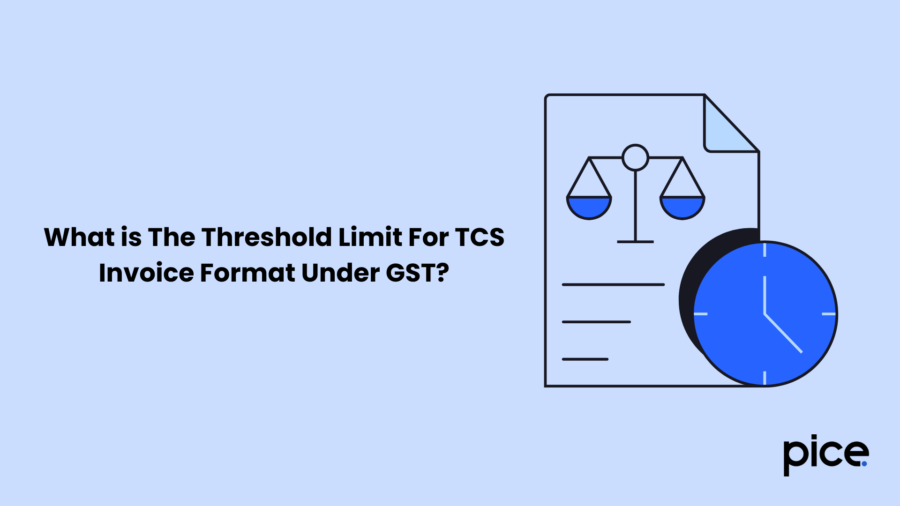
A product seller or service provider who has to collect TCS on their sales has to meet a threshold that makes them eligible for collecting TCS. Their revenue determines this threshold. Here is the detailed information:
Threshold Limit for TCS on Sale of Goods
The threshold limit of an e-commerce goods seller is ₹50 lakhs. This means that if the total amount of sales made by an e-commerce businessperson exceeds ₹50 lakhs, then that businessperson has to collect taxes on their sales of goods.
Threshold Limit for TCS on Sale of Services
There is no threshold level for collecting TCS on service sales. This means that any service provider who falls under the specified category for TCS collection will have to collect TCS on their services, regardless of their sales value.
Eligibility of an E-Commerce Operator for TCS Provision of GST
Following are the eligibility criteria of an e-commerce operator for the purpose of providing TCS for GST:
Registration for GST
An e-commerce operator who collects taxes at source for every sale must register under GST as a normal taxpayer, irrespective of the sales value. They can register by filling out form REG-01 on the GST Common Portal.
Other Registrations for a TCS Collector
A TCS collector must also obtain a separate registration as a TCS collector and the basic GST registration. This is a crucial requirement, and one can obtain this registration by filling out form REG-01 on the GST Common Portal.
Registration For Multiple States
E-commerce platforms with businesses in multiple states must get separate registrations for each state where they have a branch. This helps them comply with the different TCS requirements of various states.
Verification And Approval
Once the respective e-commerce service or product vendors file for these TCS registrations, the tax authority will verify those registrations. Tax professionals in tax authorities issue those registrations on a specified date once they have verified them.
Compliance With TCS Return Filing Requirements
Every e-commerce operator must comply with the TCS return filing requirements. This means they must provide details of supplies made from their end and details of the TCS collected from sales. The deadline for providing this information is the 10th of the upcoming month, as it is required to file GSTR-8 returns every month.
Maintenance of Records
The GST-registered supplier who collects TCS must maintain records for at least 72 months from the due date of filing the annual returns. Some necessary requirements include supplier details, supply value, TCS collected, etc.
Conclusion
The introduction of Tax Collected at Source (TCS) under GST for e-commerce transactions is a strategic move by the Government of India to strengthen tax compliance and curb tax evasion. By mandating a structured TCS invoice format, which includes essential details like the seller’s information, transaction amount, unique sale ID, GSTIN, and product specifics, transparency in online trade is greatly improved.
This not only minimises loopholes for tax theft but also ensures better revenue collection. The funds collected can be redirected toward national development initiatives, infrastructure upgrades, and public welfare schemes, contributing to stronger economic growth and a more accountable digital marketplace.
💡If you want to streamline your invoices and make payments via credit or debit card or UPI, consider using the PICE App. Explore the PICE App today and take your business to new heights.
FAQs
What is the meaning of TCS under GST?
Who is required to collect TCS under GST?
What is the due date for filing the TCS return under GST?
Can suppliers claim credit for the TCS collected under GST?
What are the key components of a TCS invoice under GST?
Quantity, price, and GST rates, Subtotal, GST amount, TCS amount, and grand total
Delivery and payment terms. This structured format ensures compliance and clarity for audits and return filing.
 By
By 










